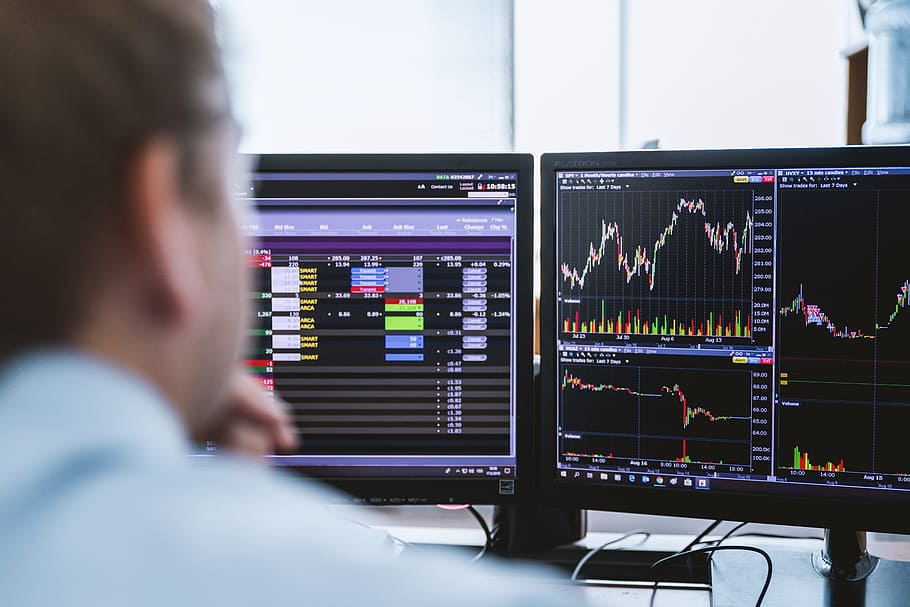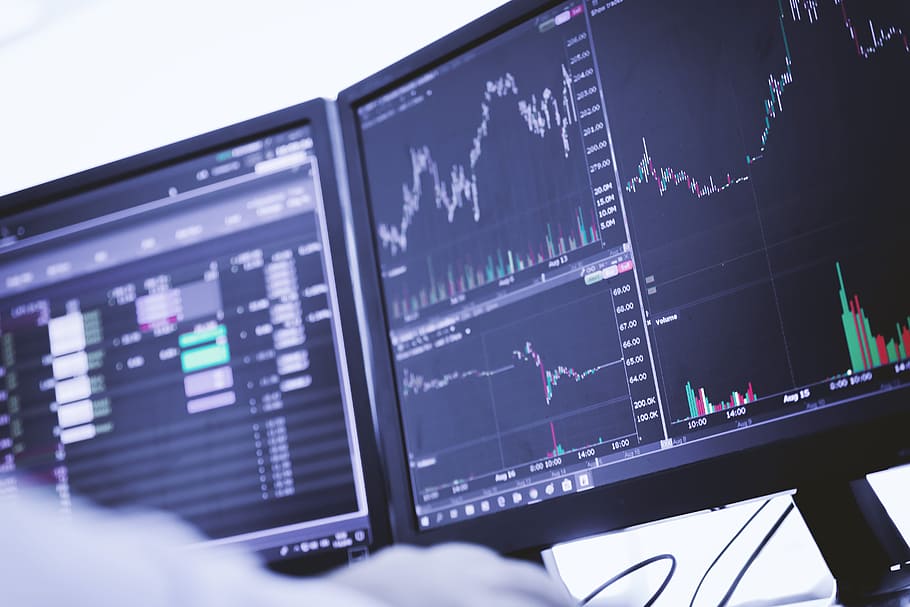Maximizing Returns: The Role of Your Trading Computer
- 1 Role of Trading Computers In Maximizing Returns
- 1.1 Understanding Trading Computers
- 1.2 Core Components of a Trading Computer
- 1.3 The Importance of Multiple Monitors
- 1.4 Software and Tools for Trading
- 1.5 Network and Connectivity
- 1.6 Customization and Scalability
- 1.7 Maintenance and Troubleshooting
- 1.8 Legal and Regulatory Considerations
- 2 Conclusion
- 2.1 FAQs:
- 2.1.1 What makes a trading computer different from a standard computer?
- 2.1.2 Why is multiple monitor support important for traders?
- 2.1.3 What role does internet connectivity play in trading computers?
- 2.1.4 How can I ensure my trading computer remains efficient over time?
- 2.1.5 What are the legal and regulatory considerations for trading computers?
- 2.1.6 When deciding between building or buying a trading computer, what factors should I consider?
- 2.1.7 How important is customization and scalability in trading computers?
In short:
- Performance is Key: A high-performance trading computer is essential for maximizing returns in the fast-paced world of financial trading.
- Core Components Matter: Components like CPU, RAM, SSD, GPU, and a robust power supply ensure speed, stability, and reliability in trading computers.
- Multiple Monitors and Connectivity: Utilizing multiple monitors and maintaining a stable, fast internet connection are vital for efficient data monitoring and real-time trading execution.
In the fast-paced world of financial trading, the efficiency and reliability of your trading computer can significantly impact your success. A high-performance trading computer is not just a luxury but a necessity for those looking to gain an edge in the markets. With the advancement of technology, traders now have access to tools and resources that can help them make informed decisions quickly. Inspired by insights from the Trading Computers website, this guide will explore the essential aspects of trading computers that contribute to maximizing returns. Ensuring your trading setup meets the highest standards can be the difference between ordinary and extraordinary trading results. Investing in a top-notch trading computer setup cannot be overstated, as it directly influences the execution speed, data analysis capabilities, and overall trading strategy effectiveness.
Role of Trading Computers In Maximizing Returns
Understanding Trading Computers
A trading computer is specifically designed to handle the demands of modern trading environments, including the processing of large volumes of data, support for multiple monitors, and the ability to execute trades at lightning-fast speeds. Unlike standard computers, trading computers are built with superior components that can handle the intense workload and multitasking required in trading. Over the years, trading computers have evolved significantly, with advancements in processor technology, storage solutions, and connectivity options, making them more powerful and efficient. This evolution has allowed traders to execute complex algorithms and strategies without worrying about lag or system crashes, which can harm trading outcomes.
Core Components of a Trading Computer
The central unit of a trading computer is its processor or CPU, which dictates the speed at which the computer can process information and execute trades. A high-end CPU with multiple cores is preferred for its ability to handle simultaneous tasks. Memory, or RAM, is another critical component, providing the workspace for running applications and analyzing data in real time. A minimum of 16GB of RAM is recommended, although more may be necessary for those using intensive applications. Storage plays a vital role in the speed at which data is accessed; solid-state drives (SSDs) are preferred for their fast read/write speeds, contributing to quicker start-up times and data retrieval. The GPU supports the operation of multiple monitors, allowing traders to view various data streams and execute trades efficiently. A robust power supply ensures the system remains stable and reliable, even under heavy loads, while an effective cooling system prevents overheating, maintaining performance. Lastly, the motherboard ties all these components together, supporting future upgrades and expansions.
The Importance of Multiple Monitors
The ability to monitor different markets and data streams simultaneously is crucial for traders. Multiple monitors enable a comprehensive view of real-time information, aiding in quicker decision-making and execution. When selecting monitors for a trading computer, it’s essential to consider factors like size, resolution, and refresh rate to ensure clarity and ease of use. An ergonomic setup is also vital, as it can significantly affect comfort and productivity during long trading sessions. Properly arranging your monitors can minimize physical strain and create a more efficient trading environment.
Software and Tools for Trading
The operating system of your trading computer should be reliable and secure, with Windows and Linux being popular choices among traders for their stability and compatibility with trading software. Essential trading platforms and analytical tools leverage the computational power of your setup to provide real-time market analysis, charting, and execution capabilities. Security software is crucial for protecting sensitive financial data against cyber threats. Additionally, automated trading systems and algorithms can be utilized to execute trades based on predefined criteria, taking advantage of the processing power available in modern trading computers.
Network and Connectivity
A stable and fast internet connection is critical for real-time trading, as even a slight delay can result in missed opportunities or significant losses. A wired connection is generally preferred for reliability and lower latency than wireless connections. VPNs are essential for traders who need secure and private access to trading platforms, especially when trading from remote locations. Reducing latency is crucial for high-frequency trading, where milliseconds can significantly affect trade execution outcomes.
Customization and Scalability
The decision to build or buy a trading computer depends on the trader’s specific needs and technical expertise. Custom-built systems offer the advantage of tailoring each component to meet precise trading requirements, while pre-built systems can provide convenience and reliability. It’s important to consider future needs, selecting components that allow for easy upgrades as trading strategies evolve and technology advances. This foresight ensures your trading computer remains effective and competitive in the dynamic trading environment.
Maintenance and Troubleshooting
Regular maintenance, including software updates and hardware checks, ensures your trading computer performs optimally. Familiarizing yourself with common issues and troubleshooting steps can minimize downtime, a critical factor in trading where every second counts. Effective backup strategies are essential for protecting against data loss and ensuring continuity in your trading activities, even during hardware failure.
Legal and Regulatory Considerations
Navigating the legal and regulatory landscape is crucial for traders using advanced technology. Compliance with financial regulations ensures that trading computers adhere to legal standards, protecting traders from potential legal repercussions. Understanding these regulations can also inform the configuration and use of trading computers, ensuring they are used within ethical and legal boundaries.
Conclusion
The role of a trading computer in maximizing returns cannot be overstated. The need for high-performance trading technology becomes more critical as the financial markets become increasingly digital and competitive. A well-configured trading computer can provide the technological edge necessary for success, enabling traders to analyze data faster, execute trades more efficiently, and monitor multiple markets simultaneously. Investing in the right components, software, and connectivity solutions is essential for building a trading setup that meets current needs and is scalable for future demands. As we look to the future, the evolution of trading technology will continue to offer new opportunities for traders to enhance their strategies and outcomes. The journey to trading success is continuous, and investing in a superior trading computer is a foundational step.
FAQs:
What makes a trading computer different from a standard computer?
Trading computers are optimized for handling the intense workload and multitasking requirements of trading, with superior components and performance capabilities.
Why is multiple monitor support important for traders?
Multiple monitors enable traders to monitor various markets and data streams simultaneously, aiding in quicker decision-making and execution.
What role does internet connectivity play in trading computers?
A stable and fast internet connection is crucial for real-time trading, as even slight delays can result in missed opportunities or losses.
How can I ensure my trading computer remains efficient over time?
Regular maintenance, including software updates, hardware checks, and effective backup strategies, ensures optimal performance and minimizes downtime.
What are the legal and regulatory considerations for trading computers?
Compliance with financial regulations ensures trading computers adhere to legal standards, protecting traders from potential legal repercussions.
When deciding between building or buying a trading computer, what factors should I consider?
Factors such as specific trading needs, technical expertise, and scalability requirements influence the decision between building a custom system or buying a pre-built one.
How important is customization and scalability in trading computers?
Customization allows traders to tailor each component to meet precise trading requirements, while scalability ensures the trading computer remains effective and competitive as trading strategies evolve and technology advances.


















